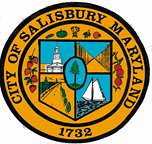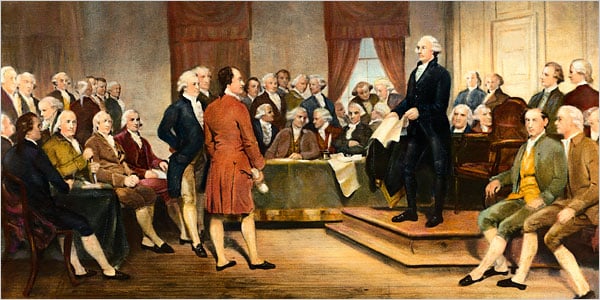Only three states grew their budgets faster than Maryland for the upcoming fiscal year. Tax revenues are not adequate to fund an 11% growth in state spending. It was made possible only by robbing dedicated funds like the transportation and open space funds and increasing a whole bunch of fees and the alcohol tax. In addition, the legislature resorted to funding operating expenses with bonds. All of this just kicks the can down the road and ensures that Maryland taxes will have to go up to pay for this profligate spending. When Maryland families and businesses are struggling to survive, it is outrageous that our elected officials continue to party like there is no tomorrow.
Maryland spending boost among largest
Study finds budget assigns 11% more despite $1B deficit
Washington Times 6/6/2011
Maryland’s budget for the upcoming fiscal year includes some of the country’s largest spending increases, a study has found.
The report details how most states are increasing spending on their paths to economic recovery for the second year in a row after two years of shrinking budgets.
It also warns how such short-term growth could be threatened by rising health care costs and the federal government’s far less stable financial situation.
“While these numbers hopefully mark a turning point in states’ recovery, their fiscal health is not likely to return to prerecession levels for some time,” association Executive Director Dan Crippen said.
Maryland's General Assembly in April passed a $34.2 billion budget, which includes $14.6 billion in general fund spending — an increase from last year’s $13.2 billion.
The general fund is composed of state revenues used for education, medical programs, state government operations and local government aid. It does not include federal funding and some state revenue sources.
Maryland and Virginia did better than most states during the recesssion because of their proximity to Washington and the federal government, which was not forced to cut jobs as was the private sector.
Three states — Florida, Minnesota and Iowa — will have larger general fund increases this year. Nationwide, general fund spending is expected to increase by 2.6 percent.
Maryland legislators clashed over the budget as Republicans unsuccessfully pushed for deeper cuts to a plan that trimmed some spending while increasing the state’s alcohol sales tax and many fees.
Legislators have indicated that more tax increases could be enacted during this fall’s special redistricting session.
Maryland Business for Responsive Government, which assesses the state’s business climate, said the study is indicative of a tax-and-spend approach.
“While other states tighten their belts, Maryland continues to spend,” said Kimberly M. Burns, the organization’s president.
She said the governors association report “serves as yet another reminder that our state doesn’t have a revenue problem, it has a spending problem.”
Although conservatives often accuse the state’s Democratic majority of reckless spending, Maryland was one of 12 states that decreased general-fund spending last year. Ten states did so this year.
Maryland lawmakers this year were able to eliminate nearly half of a $2 billion structural deficit, although many Republicans wanted a larger cut.
The study also points out that Maryland might not be in as bad of shape as many other states, considering it has the country’s sixth-largest rainy-day fund and was one of 27 states that did not have to institute midyear budget cuts in the past year.
Democrats have argued that a measured approach without drastic cuts has served the state well.
“I think we’ve done a good job,” Delegate Norman H. Conway, Wicomico Democrat and chairman of the House Appropriations Committee, said during the legislative session.
“You can talk about taking all the deficit at one time, but when you get into it, nobody can do that. You need to work on it in a planned approach.”
Maryland spending growth ranks fourth highest in nation
· Washington Examiner
Maryland state spending is projected to increase at the fourth-highest rate in the nation next fiscal year, according to a report released Thursday.
A study by the National Governors Association and National Association of State Budget Officers shows that general fund spending will increase 11.2 percent from this fiscal year in Maryland, trailing just Florida, Minnesota and Iowa, respectively. Virginia ranks 21st with a 5.6 percent growth rate, while the nationwide average is just 2.6 percent.
State budgets have been hammered in recent years and have yet to recover to pre-recession levels, as many legislatures were forced to significantly slash spending to account for dwindling revenue.
Critics, however, say the report shows that Maryland is not doing enough to tighten its belt amid economic turmoil.
"Maryland continues to spend," said Kimberly M. Burns, president of the Maryland Business for Responsive Government. "With the special session scheduled this fall, the NGA report serves as yet another reminder that our state doesn't have a revenue problem, it has a spending problem."
State officials are expected to devote millions of dollars more to the state's ailing transportation network during the special session.
However, some said it was unfair to ignore recent concessions made by state lawmakers in closing a $1.6 billion shortfall for next fiscal year.
The Maryland General Assembly approved a $14.6 billion budget for the general fund that raises alcohol taxes and relies on a wide range of fee increases, as well as reducing employee pension benefits, to fill the massive gap.
"Unless the income increases, we're not going to be increasing the outgo that much," said state Sen. Karen Montgomery, D-Silver Spring, dismissing the report and adding that Maryland is facing "huge needs for transportation" that will require more taxpayer dollars.
Scott Pattison, executive director of the National Association of StateBudget Officers, said spending changes should be measured against population growth and per capita budgets, among other factors, to determine whether states were "being profligate or not."
"The bottom line is, there are going to have to be tough choices made moving forward by elected officials, because money's going to be tight," he said.
The report cited Medicaid growth, state-mandated funding for certain categories -- Maryland law requires local jurisdictions to spend the same amount per student as the year before, for example -- and unfunded mandates as areas most likely to cripple state budgets in the near future.
Evaporating federal stimulus money also is a threat to state coffers, the study found.
Nationally, spending is expected to rise next year by 2.6 percent after rising 5.2 percent this year, the study found. The nearly $670 billion in state spending is expected to be $19 billion lower than fiscal 2008, a nearly 3 percent decline.
Maryland Gov. Martin O'Malley's office was unable to comment on the report by Thursday evening.
However, the Virginia governor's office said the study showcased a clear distinction between the commonwealth and other cash-strapped states in tackling budget crises.
Virginia has cut billions of dollars out of its budget over the past several years, butwas able to restore some funding during the 2011 General Assembly session when lawmakers marked up the state's two-year, $80 billion spending blueprint.
"While some states have sought to survive this economic downturn by hiking taxes on their citizens and job creators, Governor McDonnell and Virginia have taken a different approach," said spokesman Tucker Martin. "The governor and legislators have worked together over the past year and a half to reject tax hikes and responsibly reduce state spending. These fiscally conservative steps produced a budget surplus, and have positioned the commonwealth well for the years ahead."
David Sherfinski contributed to this report.


 This afternoon the Somerset County Commissioners unanimously passed their general fund and roads budgets for FY2012. The general fund budget for FY2012 is $36.2 million. The roads budget for FY 2012 is $5.4 million.
This afternoon the Somerset County Commissioners unanimously passed their general fund and roads budgets for FY2012. The general fund budget for FY2012 is $36.2 million. The roads budget for FY 2012 is $5.4 million. A potentially divisive Democratic primary between
A potentially divisive Democratic primary between  Under a proposed redrawing of state House district boundaries, the two communities would be split into separate districts. Summit Farms would remain in the 9th District, while Lea Eara Farms would be added to the 8th District.
Under a proposed redrawing of state House district boundaries, the two communities would be split into separate districts. Summit Farms would remain in the 9th District, while Lea Eara Farms would be added to the 8th District.  "There's no doubt that they played the political game there and wanted to block me out to run again because the race was so close," said John Marino, who lost the 2010 contest to Walker by 282 votes.
"There's no doubt that they played the political game there and wanted to block me out to run again because the race was so close," said John Marino, who lost the 2010 contest to Walker by 282 votes. 
 CLOVIS, N.M. -- A jailhouse fight over a personal music player ended after a New Mexico inmate had part of his ear bitten off.
CLOVIS, N.M. -- A jailhouse fight over a personal music player ended after a New Mexico inmate had part of his ear bitten off.  Upon being elected to his first term as the County Executive, Rick Pollitt appointed Mr. Shea – who until then was the County’s chief administrative officer, a position previously appointed by the Council – to essentially the same position as the “Director of Administration” of the County government. At the time Mr. Pollitt said that Shea would remain in that position until July 1, 2007, when he planned to retire. Unless you’ve been living under a rock since then, you probably know that Mr. Shea has continued in that position, in which he receives a 6-figure annual salary, and has decided to take the special early retirement deal that Pollitt recently instituted, with Council approval, under which a monetary incentive is provided to those who choose to retire.
Upon being elected to his first term as the County Executive, Rick Pollitt appointed Mr. Shea – who until then was the County’s chief administrative officer, a position previously appointed by the Council – to essentially the same position as the “Director of Administration” of the County government. At the time Mr. Pollitt said that Shea would remain in that position until July 1, 2007, when he planned to retire. Unless you’ve been living under a rock since then, you probably know that Mr. Shea has continued in that position, in which he receives a 6-figure annual salary, and has decided to take the special early retirement deal that Pollitt recently instituted, with Council approval, under which a monetary incentive is provided to those who choose to retire.  Shortly after his planned retirement in mid-2007, Mr. Shea was in the news in the context of Mr. Pollitt’s midnight “bonus” for certain department heads and – you guessed it – Mr. Shea. Soon after passing the County’s budget for FY 2008, the Council became aware that it included a special reward for Mr. Shea and four department heads and demanded an explanation. It seems that after the Council had cut certain items from the budget proposed by Pollitt, Mr. Shea suggested to him that those department heads should receive a bonus for their exemplary job performance as a “supplemental budget.” Pollitt, who had been in office less than a year at that time, both agreed and expanded the package to include Shea among the chosen few.
Shortly after his planned retirement in mid-2007, Mr. Shea was in the news in the context of Mr. Pollitt’s midnight “bonus” for certain department heads and – you guessed it – Mr. Shea. Soon after passing the County’s budget for FY 2008, the Council became aware that it included a special reward for Mr. Shea and four department heads and demanded an explanation. It seems that after the Council had cut certain items from the budget proposed by Pollitt, Mr. Shea suggested to him that those department heads should receive a bonus for their exemplary job performance as a “supplemental budget.” Pollitt, who had been in office less than a year at that time, both agreed and expanded the package to include Shea among the chosen few.  After the TAX CAP was ruled unconstitutional in January 1995, The Talbot County Council in May raised the property tax by 46%. That's right; they raised property taxes by almost 50 percent! But they - SPECIAL INTERESTS - didn't have enough! The next year, in 1996 they raised it another 46.3%!!! And we - Wicomico Residents - think 23.7% is bad. Now let's try and add this up . . .what's 46.1% and 46.3% over two years. Let's hold the math until the end of this lesson.
After the TAX CAP was ruled unconstitutional in January 1995, The Talbot County Council in May raised the property tax by 46%. That's right; they raised property taxes by almost 50 percent! But they - SPECIAL INTERESTS - didn't have enough! The next year, in 1996 they raised it another 46.3%!!! And we - Wicomico Residents - think 23.7% is bad. Now let's try and add this up . . .what's 46.1% and 46.3% over two years. Let's hold the math until the end of this lesson. We watched in amazement as Shanie Shields refused to join the other members in amending the budget, as proposed by the mayor, to achieve goals that will greatly benefit City residents and property owners – more police presence, less furlough days for City employees, etc. This is real budgetary responsibility that has not been seen since before the infamous “Dream Team” and Barrie Tilghman played havoc with the budget every year, which resulted in the tax rate increase four years ago.
We watched in amazement as Shanie Shields refused to join the other members in amending the budget, as proposed by the mayor, to achieve goals that will greatly benefit City residents and property owners – more police presence, less furlough days for City employees, etc. This is real budgetary responsibility that has not been seen since before the infamous “Dream Team” and Barrie Tilghman played havoc with the budget every year, which resulted in the tax rate increase four years ago. 
 3-year old Mastiff and Staffordshire Terrier mix.
3-year old Mastiff and Staffordshire Terrier mix. 

 As she prepares to enter the race in Iowa later this month, Minnesota Congresswoman Michele Bachmann has signed on high-profile political strategist Ed Rollins to run her presidential campaign, according to two sources close to Bachmann.
As she prepares to enter the race in Iowa later this month, Minnesota Congresswoman Michele Bachmann has signed on high-profile political strategist Ed Rollins to run her presidential campaign, according to two sources close to Bachmann.  Rollins will run a campaign that already has a number of experienced advisors on board, including Brett O'Donnell, who advised George W. Bush and John McCain and is considered the best debate coach in politics. Bachmann also has brought on Bob Heckman, who is prominent in the conservative movement.
Rollins will run a campaign that already has a number of experienced advisors on board, including Brett O'Donnell, who advised George W. Bush and John McCain and is considered the best debate coach in politics. Bachmann also has brought on Bob Heckman, who is prominent in the conservative movement.  The budget-writing panel voted 8-4 to restore $5 million to the $589 million program, rejecting proposals to limit Medicaid recipients to three trips to the emergency room each year, implement co-pays for visits to doctors or therapists, and temporarily cut payments to physicians and radiological services.
The budget-writing panel voted 8-4 to restore $5 million to the $589 million program, rejecting proposals to limit Medicaid recipients to three trips to the emergency room each year, implement co-pays for visits to doctors or therapists, and temporarily cut payments to physicians and radiological services. 


 A Commonwealth Court panel is weighing an open-records case that would force the Pennsylvania Turnpike Commission to turn over details of employee use of the E-ZPass electronic toll system.
A Commonwealth Court panel is weighing an open-records case that would force the Pennsylvania Turnpike Commission to turn over details of employee use of the E-ZPass electronic toll system.  Crouched in her cell, Ophelia De'lonta hoped three green disposable razors from the prison commissary would give her what the Virginia Department of Corrections will not — a sex change.
Crouched in her cell, Ophelia De'lonta hoped three green disposable razors from the prison commissary would give her what the Virginia Department of Corrections will not — a sex change. 






